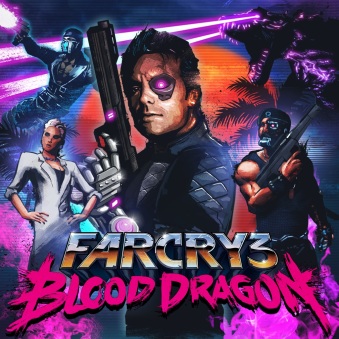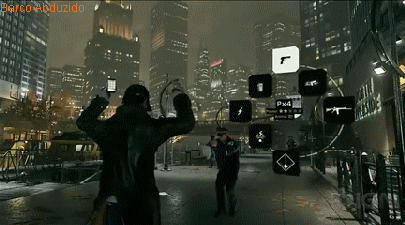*** Be forewarned: this is an impassioned piece you’re about to divest 7 minutes in. The word “Chickensh*t” pops up at least once. It should’ve a few more… ***

Risk turned reward: Ubi doing it right.
Ubisoft has a lot going for it: a plethora of virile franchises, development teams strewn across the globe, direct lines to the Hollywood money-making machine, and an audience of hungry gamers anxiously awaiting the next big title off the celebrated corporation’s roster. And yet, for a company reaping so many rewards, Ubisoft has also become the definitive industry poster-child for marginalizing and casting away “risky” ventures.

CASTING GENIUS!
Yesterday, feminist sound-offers, Bitch Media, put out a thoughtful and really thought-provoking piece about the VG-industry’s continued reluctance to incorporate fully-developed women protagonists into their games (props, Lucy V.!). Setting their specs on Ubisoft’s Assassin’s Creed and Far Cry franchises in particular, BM blasted the conglomerate’s consistent side-lining and objectification of female characters, pointing out how even “badass” fem-roles are usually narrowed down to two categories: eye-candy damsels and under-written love-interests. Notice the dashes punctuating those roles… they even sound more like fractured artifices than actual designations of personality or substance.

“Under-developed female leads, you say? Funny, I’ve never heard such a thing…”
Considering how BM notes that a whopping (and coming from the dude who hears soprano chatter over Xbox Live, like, every time I’m on the thing] believable) 40% of gamers are women, it’s frankly chickensh*t for a powerhouse publisher to leave female gamers grasping at air when it comes to offering up relatable player characters. And as rant-prone as I am, you’ve gotta admit, mah suit-wearin’-brahs, marginalizing half your audience is the equivalent of cutting your balls off and hoping the shaft alone will do the trick when come time to unzip (I’m looking at you, Watch Dogs 2).

25 Years of Properly Rep-ing for Target Demographics!
Speaking of which…

LOOK, 2 WIMMINS! Two have masks, so MAYBE FORE!
Easily one of the most promising, profitable, and understandably divisive games released this year, Watch Dogs takes the cup as the best example of how to take a fantastically risky concept and absolutely drown it in equal parts vanilla-flavored machoism and Batman-growls (as ‘Lego Movie’ Batman might say…). Sure, the flat-out stunning E3 2012 premiere left just about every gamer with a peen or a vagine this side of the moon with pants as soaked as Chicago’s fictitiously hackable streets, but, alas, hype can be just as much a killer as the game’s prospective dark knight.
Early on, there were whispers of multiple, branching protagonists other than Aiden Pearce’s overly familiar tough-tech-savvy-bro-in-trench-coat persona thought to be playable throughout the game. Ubisoft, (I admit, bro) logically, put a bullet squarely in that particular direction’s temple: development for a game that sprawling on transitional hardware (2012-13 being next-gen’s pre-epoch) would’ve pushed back release dates (and, effectively, cash-drawer ‘cha-chings’) years beyond even the two it took to turn the demo into a fully-packaged product 23 months later. Instead, they stuck to what they knew would work: keeping the typical hero the hero, and hyping the game as their newly-minted flagship franchise.

No, Aiden. That baton does not set you apart from other heroes in the Ubiverse…
And regardless, Dogs is great game. The mechanics are there, even if the graphics won’t get your juices flowing. But storywise, it’s a wash. Aiden Pearce is, indeed, as blasé and contrived a testosterone-pumped male-protag as there ever was, is, or will be. Citing critical, peer, and personal impressions of our narrative driving force, he is simply the shade of an anti-hero, propelled by lackluster and impersonal tragedy to commit inhuman (and, therefore, VG-typical) acts of selflessness and diabolism, punctuated by sweet parkour moves and cell-phone finger-swiping. In other words, he’s a stinker and better left the way of Altaïr in the original Assassin’s Creed (aka, earning nods in a sequel and otherwise just drifting off into the perpetual haze of whogivesaflyingf*ck).

His niece died. He’s out for revenge. What a good uncle.
But wait: I’m not all rant, guys. I have a solution here. Hell, I even have a money-making, brand-saving, demographic-pleasing solution ya’ll can drop and kiss my pearly white, dude-bro pancake-@$$ for.

“Don’t hate me jus’ cuz I’m cliché.”
Make the protagonist of Watch Dogs 2… wait for it…

Danny Brown?
… wait for it…

Mark Dacascos?
… wait a couple years more for it (get it? Just kidding: of course you do) …

Dead Mao Five (super-hip celebrity inclusions abound!)?
A woman.

Pretty much the reaction I anticipated.
OH SHI-. I did it now.

Moar relevent? (THANKS BARCO????????)
Yeah, bitch. Make the next hero of your “ground-breaking franchise” a woman, and earn yourselves a big ole pat on your own backs for actually bolstering your hype with some socially-conscious and inventive narrative re-imagining. Watch Dogs‘ greatest asset ends up being its open conclusion which grants more than enough room for a fresh protagonist. So step up to the plate boys: you’ve thrown yourselves a home-run here.

Spoiler Alert
Offering a fresh locale that alludes to the original’s fictitiously wired Chicago while adding consequential ‘umph’ to the conspiracy-laden experience will open the doors for gaming-gold. I’ve got two words for you-… okay, more like one word with a couple characters that signify a couple more words for you: Washington D.C. What better place to wreak some high-tech-hyper-havoc than the streets of our fair nation’s capitol? And who better to shake things up than a female hacker at the center of it all?

The Girl with the Journey Tattoo?
Sure, we had Clara Lille this past outing. *Yawn* The Lisbeth Salander-lite hardly figured into the action, quintessentially regulated to the time-tested video game role of sexy voice in our hero’s earpiece before predictably getting offed. Even in the ONE mission where she actually makes it into the gameplay as a non-playable character, she is deemed practically useless in a combat scenario. Given, she’s a hacker, not a killer. BUT FOR REALZ?

RUNAWAY!
Having the new female protagonist also inhabit the role of a hacker will be a must, but that doesn’t mean she can’t evolve into the baddy-popping Vigilante of the the first game (or, even better, how about ‘The Liberator’… DC-relevant, right there. Ubisoft, you guys can totally send me the check whenever you’re ready). I’m thinking you start her off something along the lines of Lara Croft from the Tomb Raider reboot Square Enix put out a couple years ago (minus the whole torture porn-lite vibe, and the sex sounds Lara seems to make every time she does anything remotely physical in that game… as my girlfriend pointed out, those sounds are hella suspicious late at night when she’s reading in the next room). Have her struggling to reload the first time she empties a clip from specific type of gun. Have her earliest takedown move be a swift kick to some crony’s balls when she’s forced into a melee. Have her feel fragile in a human sense, not in a ‘girly’-sense. Immerse us. Make her grow as a character and our attachment to her development grow in tandem.

Looks like we’ve made a little progress…
I know this ideal is achievable because, hey, Ubisoft’s done it before.

He’s a RELUCTANT mass annihilator of pirates and mercenaries, okay?
In the aforementioned Far Cry series’ magnum-opus, Far Cry 3, players start out as a pitifully under-skilled, vulnerable, and, therefore, believable protagonist, Jason Brody. He’s neither hardened, nor particularly brave at the beginning of the game, and yet he turns into (for better, or… well, actually, definitely for worse) a veritable killing machine worthy of John Rambo via his descent into a contemporary version of Heart of Darkness. In Watch Dogs, we’re led to believe that our hero is already engrossed in some form of vague darkness, thus, who cares why he sounds like a really angry Christian Bale with hay fever? Who cares how he learned to beat the crap out of every hardened street thug in the Midwest with a police baton? Who cares how he got that police baton? He’s a dude. And a badass one at that. That’s all the information we need. And according to Ubisoft, that’s just about all we deserve.

^Hero of Watch Dogs, laying down the h8ers.
But what we really deserve… and by we, I mean gamers (men, women, and even those 11 year olds who yelling at their moms over the mic that, yes, they will come down to eat once they hit that ever-looming XP-cap), is a willingness from publishers to offer creative and fiscal support to the risk takers. Narrative ground-breaking doesn’t happen on reflections of the tried-and-true-and-tried-and-dried: it happens on the damp banks of unexplored content, the tides of yesteryear’s strengths and merits gently rasping the shores. After all, we’d be better off soaking up the rays of critical and commercial success on the beach than stuck in the undertow, swept under retreating waves of macho misgivings.

























































